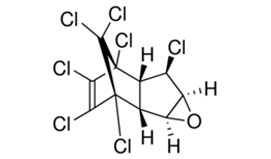 What is Heptachlor Epoxide?
What is Heptachlor Epoxide?
Heptachlor epoxide is a man-made compound that looks like a white powder. Heptachlor epoxide is created when a substance called heptachlor is released to the environment and mixes with oxygen.
Uses
Between the 1960s and 1970s heptachlor was used to kill termites found in the home and farmers used it to kill insects found on farm crops, especially corn crops. In the late 1970s, the use of heptachlor was phased out. By 1988, the commercial sale of heptachlor was banned in the United States. The use of heptachlor is restricted to controlling fire ants in power transformers.
Sources & Potential Exposure
Heptachlor tends to stay in soil for long periods of time. One study found heptachlor epoxide in crops that were grown in heptachlor-treated soil 15 years earlier. You can be exposed to heptachlor epoxide by eating these crops. Because heptachlor is not widely available and its use is restricted, the greatest exposure is through the workplace. You can be exposedExposure can occur for those working in an environment where to heptachlor epoxide if you work in a job where heptachlor is made or at a hazardous waste site or landfill where it is disposed. You can be exposed to heptachlor epoxide if heptachlor was used in your home to control termites. It is possible that traces of heptachlor could linger if applied to soil underneath your home.
The health effects from exposure to heptachlor epoxide will vary depending on how much you are exposed to and the length of time. There is very little information available about the short-term exposure to high doses of heptachlor epoxide to humans. Not much information is available about the health effects on humans from long-term exposure to heptachlor epoxide. But animal studies suggest that long-term exposure can affect the liver. The animals studied have shown enlarged livers, damage to liver and kidney tissue, and increased red blood cells.
Federal Regulations
The EPA believes heptachlor epoxide is a probable cancer causing agent because of the results of a number of studies. However, another agency, the International Agency for Research on Cancer does not classify heptachlor as cancer causing to humans because there is not enough data

 Americas
Americas Europe
Europe Français
Français Deutsch
Deutsch Italiano
Italiano Español
Español
